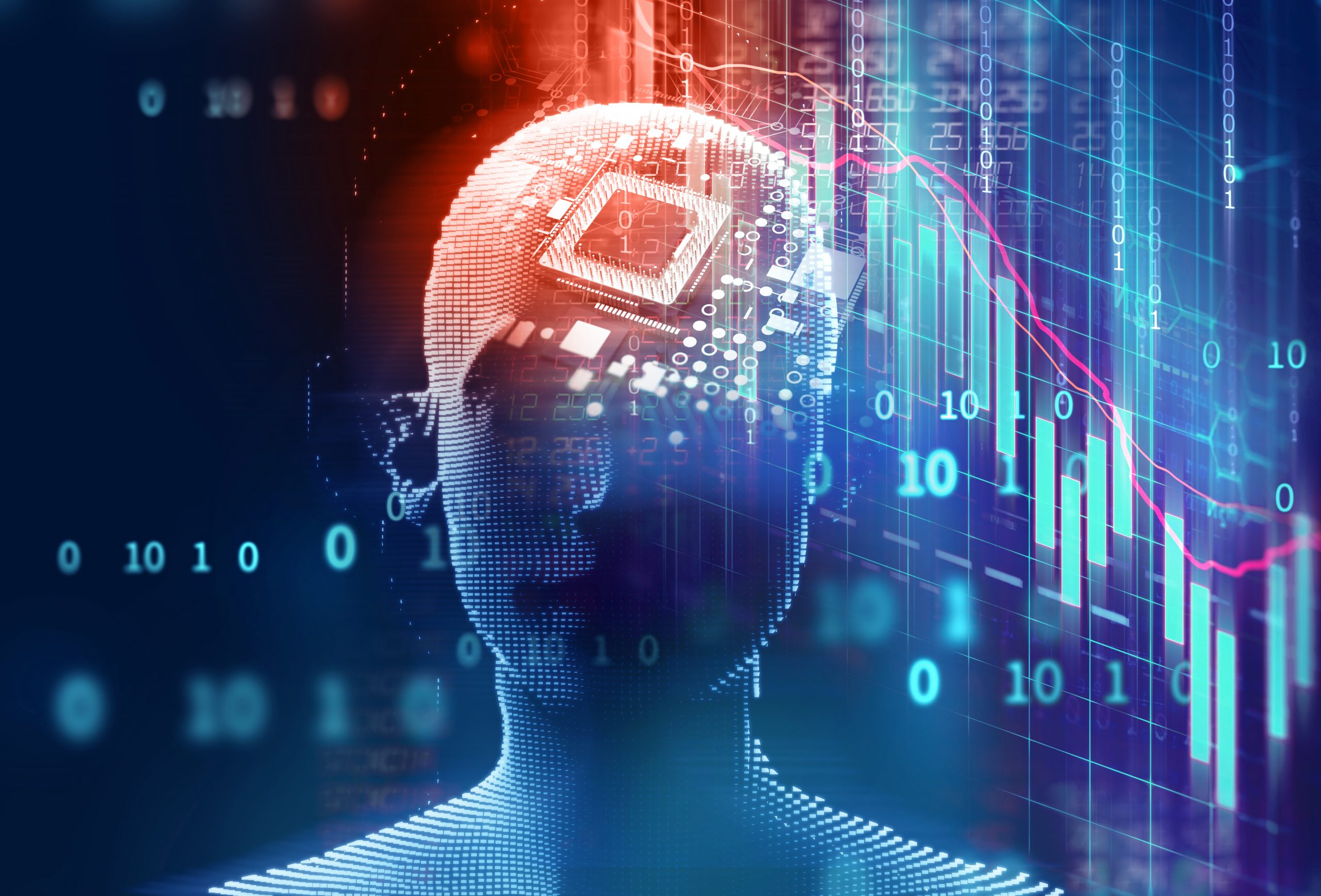AI and Machine Learning Gain Momentum with Algo Trading & ATS Amid Volatility
July 13, 2020 | By: Ivy Schmerken

An increasing number of capital markets firms are adopting machine learning and other artificial intelligence techniques to build algorithmic trading systems that learn from data without relying on rules-based systems.
With the hiring of data scientists, advances in cloud computing, and access to open source frameworks for training machine learning models, AI is transforming the trading desk. Already the largest banks have rolled out self-learning algorithms for equities trading.
“Machine learning is a natural next step of algorithmic trading because machine learning identifies patterns and behaviors in historical data and learns from it,” said Robert Hegarty, managing partner, Hegarty Group, a consultancy focusing on financial services, technology, data, and AI/machine learning.

While traditional algorithms are created by programmers and quant strategists, these algorithms based on if/then rules do not learn on their own; they need to be updated. “With machine learning, you turn it over to the machine to learn the best trading patterns and update the algorithms automatically, with no human intervention,” said Hegarty. “That’s the big differentiator.”
Momentum Behind ML
The momentum behind machine learning is getting more attention with the volatility caused by the global pandemic. Experts suggest that models built with machine learning are faster, more complex, and can adjust to extreme events, such as surge in volatility precipitated by the COVID-19 outbreak.
“It’s about building a trading venue that can adapt to a changing environment,” said Roman Ginis, CEO of Imperative Execution, a startup which launched IntelligentCross, the first AI-enabled alternative trading system for equities in 2018.

The old way is to build a system based on a spec that matches orders in a certain way. “The fundamental assumption is the world that we’ve seen in the past is also the world that we’re going to see in the future. In that case, everything works if the world is static,” said Ginis.
Prior to the global pandemic, the stock market was chugging along and trending up. “In that kind of world, one day looks a lot like the next. Then COVID happened in March and volatility went from a VIX of 15 to a VIX of 80. “Then, all–of–a-sudden, trading systems came under extreme stress with surging market data volumes and order rates,” he said.
After the spike in volatility and widening of spreads, U.S. transaction costs soared 42% in the first quarter compared to the prior quarter, to a high of 63.7 basis points per second, reported The TRADE based on a study by Virtu Financial. The costs included implementation shortfall and brokerage commissions. The study was based on Virtu’s Global Peer Database of asset managers.
Adapting to Market Anomalies
Instead of hard-coding rules in, machine learning systems allow a system to measure what’s happening in the environment and incorporate new data from the market into the decision calculation, explains Ginis.
IntelligentCross matches buyers and sellers to minimize market impact. It accepts regular limit orders, like any ATS or exchange, and matches at discrete times, microseconds to milliseconds apart. What’s different from other venues is that the match times are calibrated by an AI system to minimize post-trade market response. After each trade, IntelligentCross measures how much the price moved and incorporates it as a data point into its AI system. It then recalibrates the match times to keep the price movement as close to zero as possible, while maximizing liquidity.
For example, when volatility increases, order patience decreases – the faster the market moves the less time orders tend to rest. “IntelligentCross adapts to order rates and order patience. Venues that don’t or can’t adapt, exhibit worse performance when the environment changes: they either manifest worse market impact, or worse liquidity,” he said.
As the number of quotes exploded in the market, the industry saw a 6X quote volume increase in March vs. January, according to Imperative Execution’s data science team. “Higher quote volumes put stress on trading systems everywhere. IntelligentCross handled the additional load gracefully, with round-trip order latencies increasing by only a few percent,” said Ginis.
According to the company, the ATS has generated $30 million in savings for investors based on the $280 billion traded since launch. The ATS had 0.3 basis points in market impact vs. 1.4 bps for the exchange average. This amounts to 85% lower market impact vs. exchanges based on measuring the average midpoint 20 milliseconds after the trade.
In the same way that Imperative Execution is revolutionizing execution venues with AI to reduce market impact, machine learning and AI can be used to improve the performance of algorithms.
Sell–Side Algos
Sell–side firms began developing artificial intelligence–based algorithms about five years ago, but it’s only within the past two years that the sell side’s AI ecosystems reached a level of expansion that banks could attribute excess returns to AI as observed in A/B testing, wrote Michael Mollemans, a former TABB Group Senior Analyst in the research report “AI in Sell Side Algorithms: Survival of the Fittest.”

Initially AI became a marketing buzzword and buy–side firms were eager to use the algos in 2016-2017, but many times they had bad results, said Mollemans, who is now Research Principal at Chartis Research, in an interview. It was early days; they didn’t have access to “holistic use of AI,” he said. As the holistic ecosystem came together, they had use of big data, cloud computing and compute power through GPUs (graphic processing units) to handle the big data. “If you don’t have the data cleaned and the processing power,” then you don’t have AI, he said.
It was after MiFID II going live in January of 2018 and algo wheels gained acceptance as a way of systematically categorizing and measuring the best performing broker algos, that sell-side investment into AI began to bear fruit. Algo wheels have been a major catalyst in driving the adoption of AI in algo development, said Mollemans. Though about 20% of flows are going through algo wheels currently, sell–side firms see this as the future, said Mollemans.
Banks and asset managers are using natural language processing (NLP) and machine learning to extract valuable information from voice, documents, and audio. Read more about AI and machine learning in ”AI: Natural Language Processing and the Battle for Unstructured Data.”
For example, the most common use of AI techniques is in scheduling algo execution by calibrating urgency levels to minimize market impact and maximize opportunistic price points. “Big data can be used to learn to schedule algo child slices in a more predictive manner than traditional algo code,” states the report. Price and volume prediction are also common applications of AI, while spread capture optimization appears to be yielding results, especially in higher spread markets in Asia.
Cloud-Based Ecosystem
Now machine learning’s momentum has a lot to do with technology advancements in GPUs, parallel processing, and big data. “This reflects the convergence of cloud capability, the proliferation of data and the advances in AI and machine learning models,” said Hegarty.
Today the tools are readily available. Amazon, Google, and Microsoft have “fantastic cloud-based platforms for training machine-learning models that can be rented for a fraction of the cost of building it out in-house,” said Ginis.
There are hundreds of open-source machine learning models, like Google’s TensorFlow and eXtreme Gradient Boosting (XGBoost), which are all built so solve slightly different problems, depending on the types, whether it’s a classification or regression problem, or whether supervised, unsupervised or reinforcement learning best suits the use case, said Hegarty. Each of these models are built to handle different problem solving, he said.
In terms of the main ML models for training data, they breakdown as follows:
- Supervised machine learning is for forecasting and prediction. According to Mollemans, some sell- side firms are using “K means data clustering” to put data into buckets, such as low ADV stocks and high ADV stocks, where the parameters are known.
- Reinforcement learning is used for creating systems that learn over time to achieve a goal. They gradually learn whether their actions have good or bad outcomes.
- Unsupervised learning is suited for finding natural categories within data, when labels are not assigned. For example, unsupervised learning refers to “random forest data” which puts data into categories on its own without a human.
Some firms have developed artificial neural networks, a regression model, which like the human brain, receives data inputs and sends data outputs across many nodes, said Mollemans. Those nodes have extra layers of variables and coefficients which keep updating as the data comes in, he said.
Algo Wheels & ML
One of the use cases for machine learning is how to make TCA actionable for the buy side. For example, reinforcement learning is used by FlexTrade within its algo wheel to help the wheel adapt over time based on the results of the data that the algo wheel generates, said Alistair Cree, Product Manager for TCA and Algo Wheels at FlexTrade.

To illustrate the point, say a buy–side firm traded 50% of its orders with broker A and 50% with broker B and received some performance data back. “One of the problems encountered when running an algo wheel is deciding on how to reweight the wheel based on the performance of the different destinations and the number of orders in your data set.”
Historically, the approach was to do nothing and then take one big leap and reweight the wheel, said Cree. `
“Reinforcement learning will say, given the performance of these two destinations and given the amount of data it has, it needs to reweight by this small amount. Because that entire solution is entirely automated, you can make, many small incremental steps, rather than doing nothing and then taking one giant leap,” said Cree.
“Rather than spending three-to-six months just collecting data, and not using any of the data that you have to improve performance you’re able to improve performance continuously over that period,” said Cree.
“Second, reinforcement learning can be much more responsive and adaptive. If the market conditions change or if the performance data start showing something different, the machine learning algorithm will adjust and start reweighting towards more of an even distribution,” said Cree.
While it’s possible individual data scientists to run this analysis every day, “it’s more efficient to automate it so that your data science resources can be employed on other challenges, while continuing to benefit from the improved process,” said Cree.
Given these efficiencies, machine learning is going to become more pervasive in the next few years. “In the current economic climate, every company is looking to do more with less, advance their technological capabilities because of competitive pressures, and reduce costs,” said Hegarty.
Ginis said, while the learning curve is steep, once firms figure out how to build systems with machine learning, they will find it’s more robust than programming by hand.
With the ability to optimize its own performance, machine learning has the potential to save firms money by operating more efficiently with smaller, highly focused development teams.
“Imagine if you could have a swat team of brilliant engineers and data scientists with unlimited computing power of Amazon AWS and you could build AI-based trading platforms that can adapt their parameters automatically,” he said. Noting that Imperative Execution is set up this way and IntelligentCross is the first live product that leverages this approach, Ginis said, “Wouldn’t it be amazing to scale it industry wide.”
Meanwhile, there’s a new category of automated machine-learning platforms created by fintech startups like DataRobot and H2o.ai and others that are lowering the barriers for companies looking to employ data science and AI. “Up until recently, companies interested in utilizing data science, needed to understand statistical models, be able to program in Python or R or another sophisticated language, and understand the data and its business context,” said Hegarty. However, automated machine learning platforms largely remove the first two requirements, said Hegarty. “They allow you to easily pull in a data set of historical data and pick the best open source models, so you don’t necessarily have to be a data scientist, he said.
According to Mollemans, some firms are starting to play with autonomous algo programming and soon quantum computing will replace GPUs and parallel processing. “They write code in Java, add modules that take the data, and write code for you to improve the actual working of the algos,” he said. “We’re going to enter a period where no one is coding algorithms because they’ll be using autonomous algo programming,” the analyst predicted.
But AI-enabled financial algos need to be complex to perform well and are not necessarily intuitive to understand.
One of the biggest challenges is that the AI-trained algos tend to perform well on “in sample” anonymous test data, only to find their predictability doesn’t hold up when fed the real world, out-of-sample data, wrote Mollemans. This can happen due to overfitting the model’s variables to the data.
Concerns about explainability of AI occur when the developers cannot explain why the algos produced certain outputs. Will market veterans feel comfortable trusting the AI and machine-learning driven algos if they outstrip intuition? Clearly, AI is an evolving discipline that has a long way to go and it still requires oversight.
Since there are strict regulations around auditing trading systems and testing algorithms, and brokers are required to keep records on their algorithmic trading strategies, governance of AI is another big topic. In TABB’s report, buy-side firms expressed concerns about oversight, transparency, and data security. Even if market veterans are skeptical of turning the learning process over to black boxes, they will need to understand the behavior of AI-enabled systems.
As machine learning and AI techniques becomes more widespread in TCA and algo trading, “algo sales traders and algo users are well-advised to increase their understanding of the technology,” wrote Mollemans.
